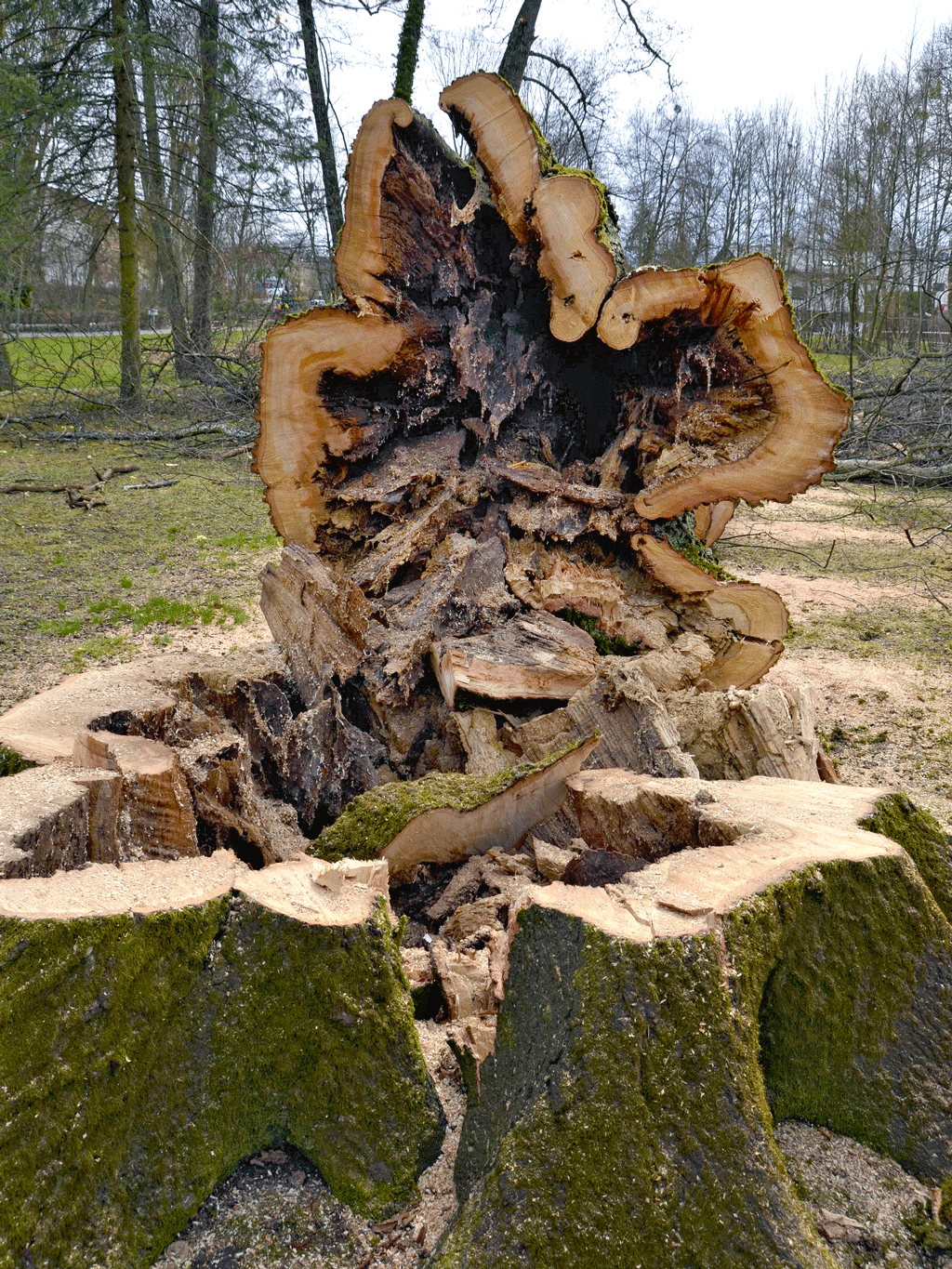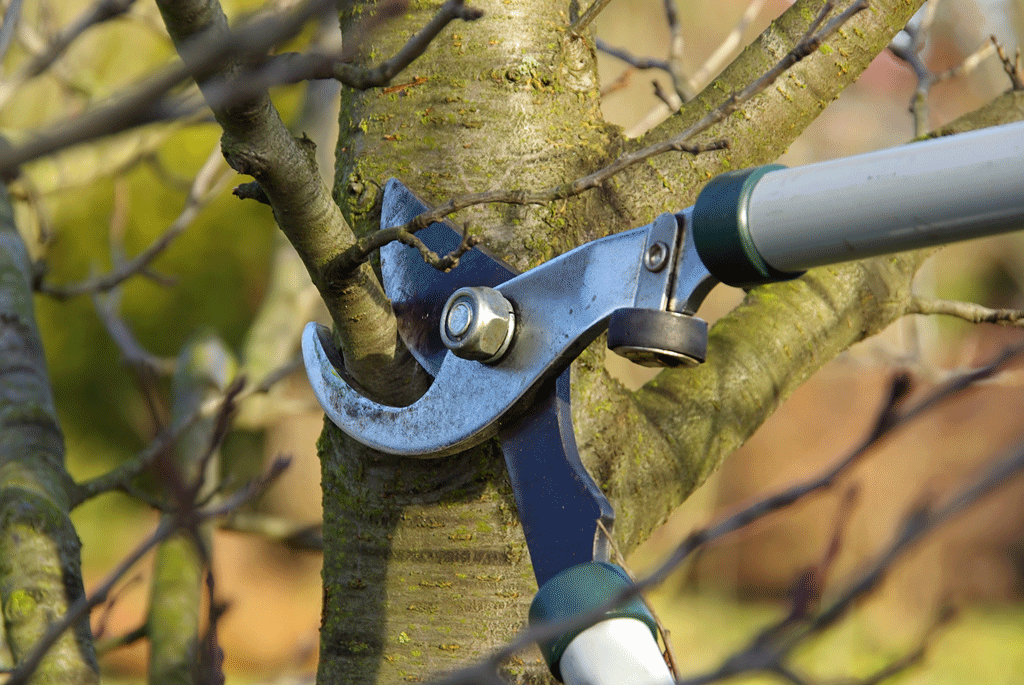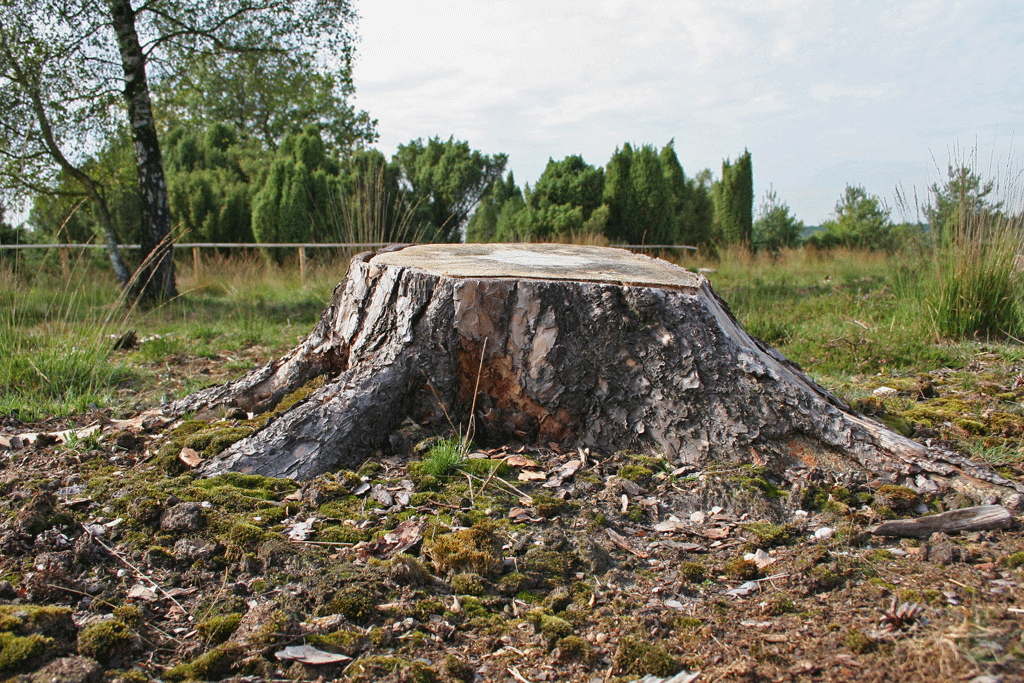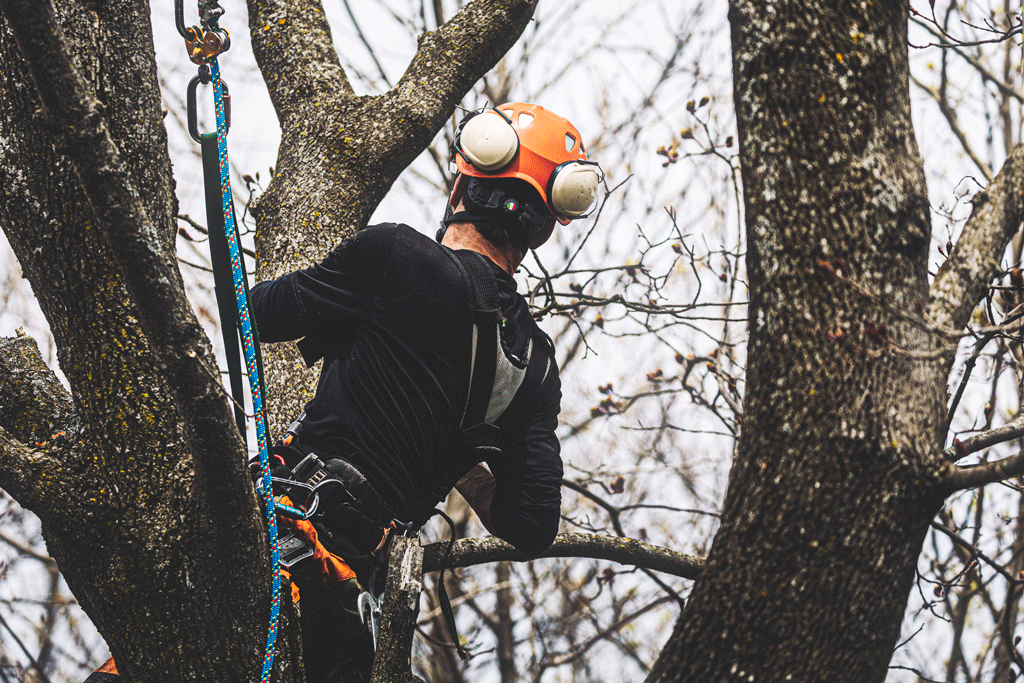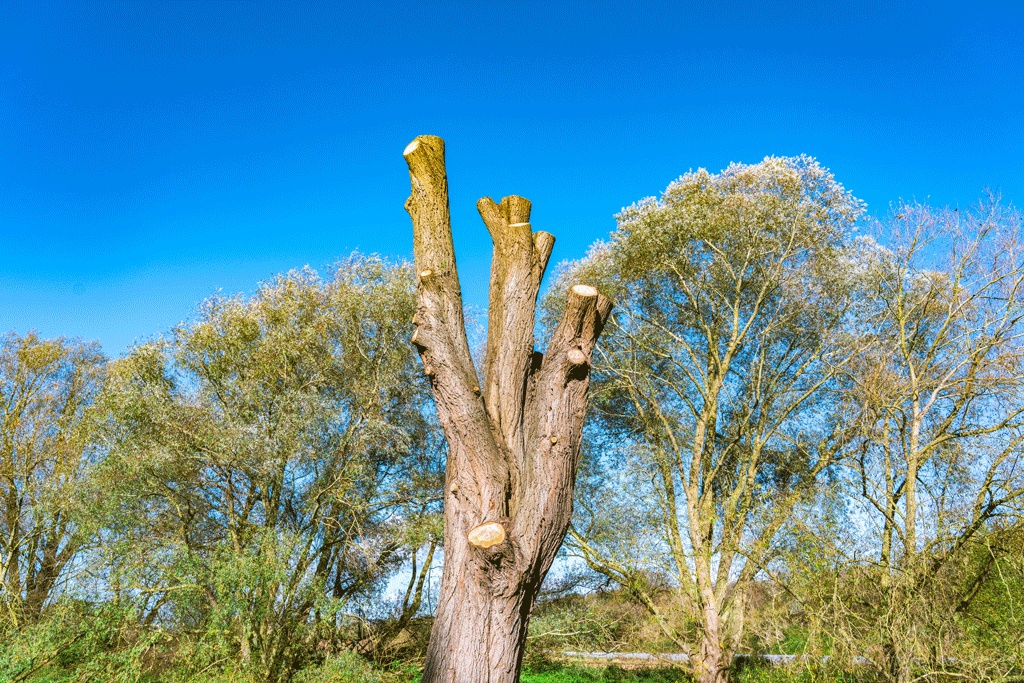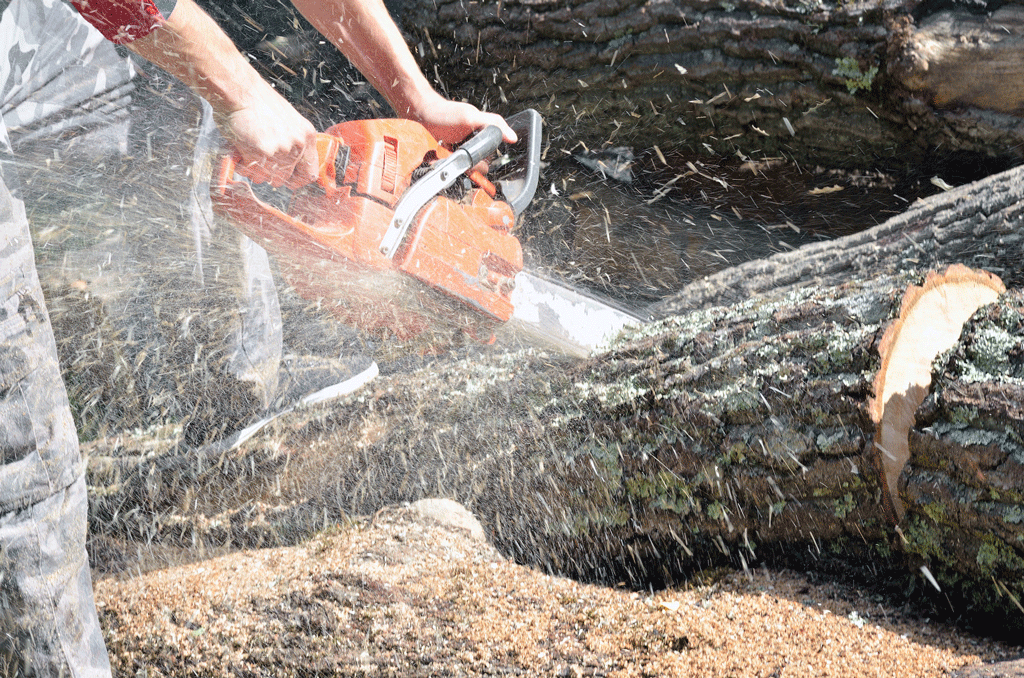Tree Trimming Service: 10 Common Tree Diseases
Have you ever looked out your window at your yard only to find that your once vibrant and lush trees now appear sickly and dull?
This can be a disheartening sight for any homeowner. Trees, after all, are the backbone of our landscapes, providing shade, beauty, and even a habitat for local wildlife.
When they’re not at their best, it can significantly impact the overall look and feel of your outdoor space.
Tree diseases could be the culprit behind this change. Just like humans, trees can fall victim to various diseases that can affect their health and appearance.
Many factors, including fungi, bacteria, and pests can cause these diseases. But don’t worry; there’s hope.
A professional tree trimming service can help restore your trees to their former glory.
In this comprehensive guide, we’ll explore the top 10 most common tree diseases.
We’ll delve into the signs to look out for, the trees most commonly affected, and the best treatment options for each disease.
As your trusted tree trimming service provider, we want to help you be on the offense!
But we won’t stop there. We’ll also discuss how regular tree trimming service can help prevent these diseases from taking hold in the first place.
So, whether you’re a seasoned gardener or a complete novice, this guide will equip you with the knowledge you need to protect your trees and keep them healthy for years.
Understanding Tree Diseases
Tree diseases can be a real bummer. They not only affect the health and appearance of your trees but can also pose a risk to other plants in your garden.
Understanding these diseases is the first step toward effective tree care.
But what exactly are tree diseases? In simple terms, they are conditions that cause harm to a tree’s health.
They can be caused by a variety of organisms, including fungi, bacteria, and viruses, as well as environmental stressors like drought, pollution, and extreme temperatures.
Some diseases are merely unsightly, causing cosmetic damage to the tree. Others, however, can be deadly, leading to significant decline and even death of the tree.
Understanding tree diseases isn’t just about knowing what they are. It’s also about recognizing the signs and symptoms of these diseases.
This can include anything from discolored leaves and cankers on the bark to stunted growth and premature leaf drop.
By recognizing these signs, you can catch diseases early and take action before they cause significant damage.
But tree diseases don’t exist in a vacuum. They are often closely linked to the overall care and maintenance of your trees.
Factors like proper watering, regular tree trimming service, and appropriate fertilization can all play a role in preventing tree diseases. That’s why a comprehensive approach to tree care, including regular check-ups from a professional tree trimming service, is so important.
In the following sections, we’ll delve deeper into the most common tree diseases, providing you with the knowledge you need to protect your trees.
Join us, your local tree trimming service provider, and let’s dive in and start exploring the world of tree diseases.
Photo By LianeM at iStock
The Importance of Tree Trimming Service
When you think of tree trimming service, you might first think of it as a way to keep your trees looking neat and tidy.
While it’s true that regular tree trimming services can greatly enhance the aesthetics of your landscape, the benefits of this service go far beyond appearances.
Tree trimming service is a crucial service that plays a vital role in maintaining the health of your trees and keeping them free from diseases.
Trees, like all living organisms, can be affected by a variety of health issues.
These can range from infestations by pests to infections caused by bacteria, fungi, and other pathogens.
Left unchecked, these issues can cause significant damage, leading to a decline in the tree’s health and, in severe cases, even death.
This is where a professional tree trimming service comes into play.
Trained arborists, like those at S&P Tree Service, have the knowledge and expertise to identify early signs of disease or pest infestation.
They know what to look for, from the tell-tale signs of leaf discoloration that might indicate a fungal infection to the presence of pests that could be damaging the tree.
Once these issues are identified, a tree trimming service can take the necessary action to address the problem.
This might involve pruning away diseased or infested branches to prevent the issue from spreading to the rest of the tree.
In some cases, they might apply treatments to combat pests or diseases and protect the tree from further harm as well as tree trimming service.
But the benefits of a tree trimming service aren’t just reactive; they’re also preventative.
Regular tree trimming service can help prevent issues from arising in the first place. By removing dead or dying branches, tree trimming can prevent them from becoming entry points for pests or pathogens.
Tree trimming service can also improve air circulation and sunlight penetration, creating conditions that are less favorable for the development of certain diseases.
Furthermore, regular tree trimming service can help maintain the structural integrity of the tree.
By removing weak or poorly attached branches, a tree trimming service provider can prevent them from breaking off and causing damage.
It can also help shape the tree in a way that promotes healthy and balanced growth.
In addition to all these benefits, a professional tree trimming service can also provide valuable advice on how to care for your trees.
They can guide you on the best practices for watering, fertilizing, and overall tree care.
This advice can be invaluable in maintaining the health of your trees and preventing issues from arising.
While a tree trimming service might seem like a purely cosmetic service, it’s an essential part of maintaining the health and well-being of your trees.
A professional tree trimming service like S&P Tree Service can provide expert care, helping to keep your trees healthy, beautiful, and free from diseases.
So next time you look out at your trees, remember that regular tree trimming service is not just about keeping them looking good; it’s about keeping them in good health too.
Disease #1: Oak Wilt
- Signs: Wilted leaves, leaf discoloration, rapid tree death.
- Most Affected Trees: All species of oak, but red oaks are particularly susceptible.
- Treatment Options: Removal of infected trees, fungicide injections, and preventative measures like avoiding tree trimming services during active periods of the disease.
Oak Wilt is a devastating disease that affects all species of oak trees.
It’s caused by a fungus, Bretziella fagacearum, which invades the tree’s water conducting system, blocking the flow of water and nutrients.
This blockage causes leaves to wilt, turn brown or bronze, and eventually fall off. The disease progresses rapidly, and in severe cases, it can lead to the tree’s death within just a few weeks of infection.
Red oaks are particularly susceptible to Oak Wilt. They often die within a few weeks to six months of infection.
White oaks, on the other hand, are more resistant and can often survive infection, although they may experience branch dieback.
The first signs of Oak Wilt are often wilting leaves, starting at the top of the tree and gradually spreading downwards.
Leaves may also show discoloration, with areas turning pale green, bronze, or brown.
As the disease progresses, leaves fall off, and branches die back. In the final stages of the disease, the entire tree may die.
Controlling Oak Wilt can be challenging, but there are several strategies that can help. Infected trees should be removed and properly disposed of to prevent the fungus from spreading.
Fungicide injections can also be effective if applied early, but they are not a practical solution for large-scale infestations.
Preventative measures are often the best defense against Oak Wilt.
This includes avoiding pruning or wounding oaks during the active periods of the disease (typically spring and early summer), as fresh wounds can attract beetles that spread the fungus.
Creating a trench around infected trees can also help prevent the spread of the disease through root grafts.
Regular inspections by a professional tree trimming service can also be beneficial.
Trained arborists can spot early signs of Oak Wilt and take action before the disease spreads.
They can also provide advice on the best care practices for your oaks to keep them healthy and resistant to disease.
In conclusion, while Oak Wilt is a deadly disease, with the right knowledge and care, it can be managed.
Regular tree care, early detection, and professional help are all crucial in the fight against this disease.
So, keep a close eye on your oaks, and at the first sign of trouble, don’t hesitate to call in the professionals.
Disease #2: Dutch Elm Disease
- Signs: Yellowing or wilting of leaves, branch dieback, brown streaks in wood. Most
- Affected Trees: Elm trees.
- Treatment Options: Hiring a tree trimming service provider to prune infected branches, injection of fungicides, removal of severely infected trees.
Dutch Elm Disease is a devastating disease that has caused significant losses to elm populations worldwide.
It’s caused by two species of fungi, Ophiostoma ulmi and Ophiostoma novo-ulmi, with the latter being more aggressive and responsible for most of the Dutch Elm Disease seen today.
The disease is spread by elm bark beetles, which carry the fungus from infected trees to healthy ones.
The fungus can also spread through root grafts between neighboring trees. Once inside the tree, the fungus produces toxins and triggers a defensive response, causing the tree to block its own water-conducting vessels in an attempt to halt the spread of the fungus.
This blockage disrupts the tree’s water supply, leading to wilting, yellowing of leaves, and eventually, tree death.
The first signs of Dutch Elm Disease are often yellowing or wilting of leaves, starting at the outer branches and gradually spreading to the rest of the tree.
As the disease progresses, branches begin to die back, and brown streaks may appear in the wood under the bark. In severe cases, the entire tree may wilt and die within a few weeks or months.
Controlling Dutch Elm Disease can be challenging, but there are several strategies that can help. Infected branches should be pruned and properly disposed of to prevent the beetles from spreading the fungus.
Fungicide injections can also be effective if applied early and can protect the tree for several years.
However, severely infected trees are often beyond saving and should be removed to prevent the disease from spreading.
Preventative measures are also crucial in the fight against Dutch Elm Disease.
This includes regular inspections to detect the disease early and the use of resistant elm varieties for new plantings.
Avoiding pruning during the beetle flight season (typically from late spring to early fall) can also help prevent infection, as fresh wounds can attract beetles.
A professional tree trimming service can play a crucial role in managing Dutch Elm Disease.
Trained arborists can spot early signs of the disease, properly prune infected trees, and apply fungicides.
They can also provide advice on the best care practices for your elms to keep them healthy and resistant to disease.
In conclusion, while Dutch Elm Disease is a serious threat to elm trees, with the right knowledge and care, it can be managed.
Regular tree care, early detection, and professional help are all crucial in the fight against this disease.
So, keep a close eye on your elms, and at the first sign of trouble, don’t hesitate to call in the professionals.
Disease #3: Fire Blight
- Signs: Wilting, blackening or browning of blossoms and branches, a “burned” appearance.
- Most Affected Trees: Apple, pear, and other members of the rose family.
- Treatment Options: Hire a tree trimming service to prune infected branches during dormant season, application of antibacterial sprays, proper sanitation practices.
Fire Blight is a bacterial disease that can cause significant damage to trees, particularly those in the rose family.
This includes common fruit trees like apple and pear, as well as ornamental species like hawthorn and mountain ash.
The disease is caused by the bacterium Erwinia amylovora, which can spread rapidly in favorable conditions and cause extensive damage.
The name “Fire Blight” comes from the scorched appearance of infected trees. The first signs of the disease are often wilting, blackening, or browning of blossoms and branches.
As the disease progresses, these symptoms can spread to the twigs, branches, and even the trunk, giving the tree a “burned” or “blighted” appearance.
In severe cases, the disease can cause branches to curl into a “shepherd’s crook” shape, and a sticky, amber-colored ooze may seep from infected areas.
If left untreated, Fire Blight can lead to the death of the tree. Even if the tree survives, the disease can weaken it, making it more susceptible to other diseases and pests.
It can also reduce fruit yield in affected orchards, making it a significant concern for commercial growers.
Control of Fire Blight involves several strategies. Infected branches should be pruned during the dormant season to prevent the spread of the disease.
The cuts should be made well below the infected area, and pruning tools should be disinfected between cuts to avoid spreading the bacteria.
Application of antibacterial sprays can also be effective in controlling Fire Blight.
These sprays, which often contain the antibiotic streptomycin, can be applied during the bloom period to protect blossoms from infection.
However, they should be used as part of an integrated pest management strategy, as over-reliance on antibiotics can lead to resistance.
Proper sanitation practices are also crucial in the fight against Fire Blight. This includes removing and disposing of fallen infected material, which can harbor the bacteria and lead to reinfection.
Infected material should be burned or sent to a landfill to prevent the bacteria from spreading.
While Fire Blight can be a serious threat to trees in the rose family, with the right strategies, it can be effectively managed.
Regular tree trimming services, application of antibacterial sprays, and good sanitation practices are all key components in the fight against this destructive disease.
So, if you have apple, pear, or other susceptible trees in your garden, keep a close eye on them, and at the first sign of trouble, don’t hesitate to call in a professional tree trimming service.
Photo By Dragomira at iStock
Disease #4: Anthracnose
- Signs: Brown leaf spots, twig dieback, premature leaf drop.
- Most Affected Trees: Many hardwood species, including oak, maple, and ash.
- Treatment Options: Regular pruning, application of fungicides, maintaining tree vigor through proper watering and fertilization.
Anthracnose is a term used to describe a group of fungal diseases that can affect a wide range of plant species, including many common hardwood trees.
Species like oak, maple, ash, and sycamore are all susceptible to Anthracnose, which can cause a variety of symptoms and lead to a decline in tree health.
The disease is caused by several different species of fungi, all of which thrive in wet, humid conditions.
Spores of these fungi can overwinter in fallen leaves and twigs, and then spread to new growth in the spring through rain splash, wind, or insects.
The first signs of Anthracnose are often small, irregular brown spots on the leaves.
These spots can expand over time, leading to large areas of dead tissue. As the disease progresses, it can cause twig dieback, premature leaf drop, and in severe cases, significant defoliation.
While Anthracnose is rarely fatal to mature trees, it can weaken them and make them more susceptible to other diseases and pests. In young trees, however, the disease can be much more damaging and may even lead to tree death.
The best defense against Anthracnose is maintaining tree vigor through proper care. This includes regular watering during dry periods and proper fertilization to ensure the tree has the nutrients it needs to fight off infection.
Healthy, vigorous trees are much more resistant to Anthracnose and other diseases.
Regular tree trimming service can also help in the fight against Anthracnose.
By removing dead or diseased branches, pruning can improve air circulation within the tree canopy, reducing humidity levels and making conditions less favorable for the fungi.
Tree trimming service can also help maintain the tree’s shape and structure, reducing the risk of damage from wind or heavy snow.
In cases of severe infection, application of fungicides may be necessary.
These can be applied in the spring, just as the new leaves are emerging.
However, fungicides should be used as a last resort, as they can have negative impacts on beneficial insects and other non-target organisms.
While Anthracnose can be a serious threat to many hardwood species, with the right care and management, it can be effectively controlled.
Regular tree trimming service, proper watering and fertilization, and in severe cases, the application of fungicides, are all key strategies in the fight against this disease.
So, if you have hardwood trees in your garden, keep a close eye on them, and at the first sign of trouble, don’t hesitate to call in a professional tree trimming service.
Photo By Instants at iStock
Disease #5: Cedar Rusts
- Signs: Orange or rust-colored spots on leaves, galls on branches.
- Most Affected Trees: Eastern red cedar, apple, crabapple, and other members of the rose family.
- Treatment Options: Removal of galls, application of fungicides, planting resistant varieties.
Cedar Rusts are a group of fungal diseases that primarily affect eastern red cedar, apple, crabapple, and other members of the rose family.
The diseases are caused by several species of the fungus Gymnosporangium, and they are characterized by the presence of orange or rust-colored spots on leaves and galls on branches.
One of the most distinctive features of Cedar Rusts is their complex life cycle, which requires two different host species.
The fungus alternates between members of the rose family (where it causes leaf and fruit infections) and junipers (where it forms galls on branches).
This unique life cycle can make the disease particularly challenging to control.
The first signs of Cedar Rusts are often small, orange or rust-colored spots on the leaves of apple, crabapple, or other susceptible trees.
These spots can expand over time, leading to significant leaf damage and premature leaf drop.
On junipers, the disease causes the formation of galls, which are abnormal growths on the branches.
In the spring, these galls produce orange, gelatinous spore horns, which release spores that can infect the rose family hosts.
Control of Cedar Rusts can be challenging due to the need for two host species. However, there are several strategies that can help.
One of the most effective is the removal of galls from junipers. This can help reduce the number of spores available to infect the rose family hosts.
However, this should be done in late winter or early spring, before the galls begin to produce spores.
Application of fungicides can also be effective in controlling Cedar Rusts. These can be applied to the rose family hosts in the spring, just as the new leaves are emerging.
However, because the disease requires two hosts, fungicide application should be combined with other control measures for the best results.
Planting resistant varieties is often the best long-term solution for Cedar Rusts.
Many varieties of apple, crabapple, and other susceptible species have been bred for resistance to these diseases.
By choosing these varieties for new plantings, you can help reduce the impact of Cedar Rusts on your trees.
While Cedar Rusts can be a serious threat to eastern red cedar, apple, crabapple, and other members of the rose family, with the right strategies, they can be effectively managed.
Removal of galls, application of fungicides, and planting resistant varieties are all key strategies in the fight against these diseases.
So, if you have susceptible trees in your garden, keep a close eye on them, and at the first sign of trouble, don’t hesitate to call in a professional tree trimming service.
Disease #6: Pine Beetle Infestation
- Signs: Yellowing or reddening of needles, pitch tubes, sawdust-like frass.
- Most Affected Trees: Pine trees.
- Treatment Options: Removal and destruction of infested trees, use of insecticides, maintaining tree health.
Pine Beetle Infestation isn’t a disease in the traditional sense, but the damage these tiny insects cause is so significant that it’s often classified as such.
Pine beetles bore into the bark of pine trees, lay their eggs, and the hatched larvae then feed on the tree, disrupting its ability to transport nutrients and water.
The first signs of a Pine Beetle Infestation are often a yellowing or reddening of needles.
As the infestation progresses, you may notice pitch tubes (small blobs of resin) on the tree’s bark and a sawdust-like substance, known as frass, at the base of the tree.
Controlling Pine Beetle Infestations can be challenging. Infested trees should be removed and destroyed to prevent the beetles from spreading.
Insecticides can be effective if applied early, but they are not a practical solution for large-scale infestations.
The best defense against Pine Beetle Infestations is maintaining tree health, as beetles are more likely to target stressed and weakened trees.
Disease #7: Root Rot
- Signs: Yellowing or wilting of leaves, branch dieback, mushroom growth at the base of the tree.
- Most Affected Trees: Many tree species are susceptible, but conditions that promote poor drainage are a common factor.
- Treatment Options: Improving soil drainage, application of fungicides, removal of severely infected trees.
Root Rot is a common disease that affects many tree species.
It is caused by various fungi that thrive in poorly drained soils. The disease attacks the roots of the tree, disrupting its ability to absorb water and nutrients.
The first signs of Root Rot are often a yellowing or wilting of leaves and branch dieback.
As the disease progresses, you may notice mushroom growth at the base of the tree. In severe cases, Root Rot can lead to the death of the tree.
Control of Root Rot primarily involves improving soil drainage.
This can be achieved by amending the soil with organic matter or installing a drainage system.
Application of fungicides can also be effective in the early stages of disease development.
However, severely infected trees are often beyond saving and should be removed by a professional tree trimming service provider to prevent the disease from spreading.
Disease #8: Canker Disease
- Signs: Sunken, discolored areas on bark, branch dieback, premature leaf drop.
- Most Affected Trees: Many tree species, but conditions that stress trees (like drought or injury) can increase susceptibility.
- Treatment Options: Pruning of infected branches, maintaining tree health, avoiding tree injury.
Canker Disease is a common tree disease that causes sunken, discolored areas on the bark of trees.
These cankers can girdle branches or even the entire tree, leading to dieback and premature leaf drop. In severe cases, Canker Disease can lead to the death of the tree.
Canker Disease is caused by various fungi and bacteria, but the disease is often associated with conditions that stress trees, such as drought or injury.
Trees that are stressed are more susceptible to infection and less able to fight off the disease.
Control of Canker Disease involves several strategies. Infected branches should be pruned to prevent the disease from spreading.
It’s also important to maintain tree health through proper watering and fertilization.
Avoiding tree injury, such as from lawnmowers or pruning tools, can also help prevent infection. This is another great example of the importance of hiring a professional tree trimming service provider over a DIY attempt.
Disease #9: Leaf Spot
- Signs: Brown or black spots on leaves, premature leaf drop.
- Most Affected Trees: Many tree species, but conditions that promote high humidity can increase susceptibility.
- Treatment Options: Regular pruning, application of fungicides, maintaining tree health.
Leaf Spot is a common disease that causes brown or black spots on the leaves of trees. The disease is caused by various fungi and bacteria, and can lead to premature leaf drop.
In severe cases, Leaf Spot can cause significant defoliation and decline in tree health.
Leaf Spot diseases are often associated with conditions that promote high humidity, such as dense plantings or poor air circulation.
Trees in these conditions are more susceptible to infection and less able to dry out after rainfall or dew, creating a perfect environment for the disease to thrive.
Control of Leaf Spot involves several strategies. Regular tree trimming service can improve air circulation and reduce humidity levels within the tree canopy.
Application of fungicides can also be effective in the early stages of disease development.
However, maintaining tree health through proper watering and fertilization is often the best defense against Leaf Spot.
Photo By CHUNYIP WONG at iStock
Disease #10: Powdery Mildew
- Signs: White or gray powdery spots on leaves, stunted growth, leaf curling.
- Most Affected Trees: Many tree species, but particularly those in shady areas with poor air circulation.
- Treatment Options: Regular tree trimming service, application of fungicides, maintaining tree health.
Powdery Mildew is a common fungal disease that affects a wide range of tree species.
It’s easily recognizable by the white or gray powdery spots that appear on the leaves, stems, and sometimes fruit or flowers of the tree.
While it may not kill a tree outright, Powdery Mildew can weaken a tree, making it more susceptible to other diseases and pests.
The first signs of Powdery Mildew are often small, powdery white or gray spots on the leaves.
As the disease progresses, these spots can grow and merge, covering large areas of the leaf surface.
Infected leaves may begin to curl or twist, and the tree’s growth may be stunted. In severe cases, leaves may turn yellow or brown and fall off the tree prematurely.
Powdery Mildew thrives in warm, humid conditions, particularly in areas with poor air circulation.
It’s often more prevalent in shady areas where the leaves of the tree remain damp for extended periods.
However, unlike many other fungal diseases, Powdery Mildew can also thrive in dry conditions.
Control of Powdery Mildew involves several strategies.
Regular tree trimming service can improve air circulation and reduce humidity levels within the tree canopy, making it harder for the disease to take hold.
Tree trimming service should be done in the dormant season to avoid creating fresh wounds that could be infected.
Application of fungicides can also be effective in controlling Powdery Mildew. Fungicides should be applied at the first sign of infection, and repeated applications may be necessary to keep the disease in check.
However, fungicides are often more effective as a preventative measure, rather than a cure.
Maintaining tree health is also crucial in the fight against Powdery Mildew. Trees that are stressed due to drought, nutrient deficiencies, or other factors are more susceptible to infection.
Regular watering and fertilization can help keep your trees healthy and more able to resist disease.
In conclusion, while Powdery Mildew can be a serious problem for many tree species, with the right strategies, it can be effectively managed.
Regular tree trimming service, application of fungicides, and maintaining tree health are all key components in the fight against this common tree disease.
How Tree Trimming Service Can Help Prevent These Diseases
Regular tree trimming is a crucial part of maintaining the health and vitality of your trees.
It’s not just about aesthetics; a professional tree trimming service can play a significant role in preventing the common tree diseases we’ve discussed.
Firstly, tree trimming helps improve air circulation and sunlight penetration, both of which can help prevent many fungal diseases like Powdery Mildew and Leaf Spot.
By removing excess branches, more air can circulate through the tree, reducing humidity and making it harder for fungi to thrive.
Secondly, tree trimming can help prevent the spread of diseases within a tree.
If a branch is infected with a disease like Canker Disease or Fire Blight, removing it can prevent the disease from spreading to the rest of the tree.
Lastly, a professional tree trimming service can spot early signs of disease that you might miss.
Early detection is key in managing many tree diseases, and a professional arborist has the training and experience to spot these signs.
Photo By opreaistock at iStock
Choosing the Right Tree Trimming Service
Choosing the right tree trimming service is crucial for maintaining the health of your trees. Here are some factors to consider:
- Experience and Qualifications: Look for a service with experienced, qualified arborists. They should have a deep understanding of tree biology and be able to diagnose and treat a wide range of tree diseases.
- Reputation: Check online reviews and ask for references. A reputable service should have a track record of satisfied customers.
- Services: Make sure the service offers the specific services you need, whether that’s regular pruning, disease treatment, or emergency tree removal.
- Safety: Tree work can be dangerous. Ensure the service follows industry safety standards and is fully insured.
- Price: While it’s important to consider price, don’t sacrifice quality for a bargain. The health of your trees is an investment in your property’s value and beauty.
One such service that ticks all these boxes is S&P Tree Service.
With their experienced team and comprehensive range of services, they can help keep your trees healthy and beautiful.
Tree Trimming Service FAQ
- What are the most common tree diseases?
The most common tree diseases include Oak Wilt, Dutch Elm Disease, Fire Blight, Anthracnose, Cedar Rusts, Pine Beetle Infestation, Root Rot, Canker Disease, Leaf Spot, and Powdery Mildew.
- How can I prevent tree diseases?
Regular tree care, including watering, fertilizing, and pruning, can help prevent many tree diseases. A professional tree trimming service can also help diagnose and treat diseases early.
- How often should I have my trees trimmed?
The frequency of tree trimming can depend on the species and health of the tree, but generally, it’s a good idea to have your trees inspected at least once a year.
- Can a diseased tree be saved?
In many cases, if a disease is caught early, a tree can be saved. However, some diseases can be fatal to trees, especially if left untreated.
- Why should I hire a professional tree trimming service?
A professional service has the knowledge and equipment to safely and effectively care for your trees. They can spot early signs of disease, properly prune your trees, and provide advice on tree care.
Tree diseases can be a serious threat to the health and beauty of your landscape.
However, with knowledge of the most common diseases and how to prevent them, you can protect your trees.
Regular care from a professional tree trimming service like S&P Tree Service can be a crucial part of this protection.
So, when was the last time you had your trees inspected for signs of disease?
See our previous blog about this topic here.
Check out our customer reviews here.


